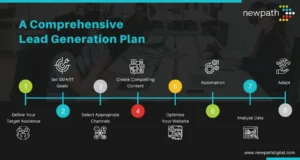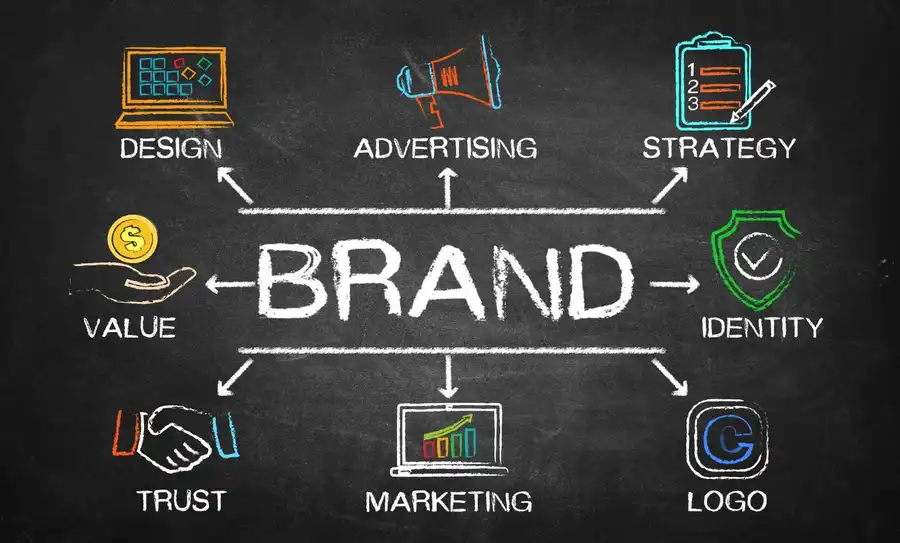Lead generation strategies have become key players in the success stories of marketing efforts. With the best lead generation strategies in place, businesses can fortify their sales pipeline, by attracting, engaging, and converting prospective customers into leads.
Understanding Lead Generation
The goal of lead generation is to catch the attention of potential customers and nurture them with key information until they become a paying customer.
To create an effective lead generation plan, you need to consider multiple factors, such as defining your target audience, setting clear goals, and identifying the most appropriate channels and tactics for reaching your audience.
Effective Lead Generation Strategies
Inbound Marketing Strategies
These strategies attract leads organically by crafting and publishing valuable online content. This is done by creating content that resonates with your audience and fine-tuning your online platforms to attract and engage potential leads effectively. Content marketing and blogging, search engine optimization (SEO), and social media marketing are key components of inbound lead generation.
- Content marketing and blogging center on the creation of informative and captivating content developed to address the pain points and interests of your target audience. By delivering valuable insights and actionable solutions, you position yourself as a trusted authority within your industry and attract qualified leads.
- SEO involves the strategic optimization of your website and content to increase its visibility in search engine results. This involves conducting keyword research, fine-tuning meta tags, and cultivating authoritative backlinks, all of which enhance your website’s visibility and attract organic traffic to your website.
- Social media marketing and engagement enable you to leverage platforms like Facebook, Twitter, and LinkedIn to connect with your target audience, share valuable content, and generate leads. Engaging with your followers and participating in relevant communities can help build brand awareness and foster meaningful connections.
Outbound Marketing Strategies
While inbound strategies focus on drawing in leads, outbound strategies involve actively reaching out to potential customers. Outbound lead generation is generally used in b2b lead generation strategies and encompasses email marketing campaigns, cold calling initiatives, and networking or referrals. These methods entail engagement with prospects to initiate meaningful interactions and foster business relationships.
- Email marketing campaigns allow you to nurture leads and build relationships by sending personalized and targeted emails. By providing valuable content and offers, you can engage with your audience and encourage them to take the desired action.
- Cold calling and direct outreach involve reaching out to potential leads via phone calls or emails. While this method requires careful targeting and personalized communication, it can be highly effective in generating leads and initiating conversations.
- Networking and referrals leverage your existing professional network and customer base to generate new leads. By attending industry events, participating in online communities, and incentivizing referrals, you can tap into a network of qualified prospects.
Creative Lead Generation Ideas
To stand out in a crowded market, it’s essential to think about what your target audience wants and needs and then experiment with lead-generation strategies.
- Webinars and virtual events provide an interactive platform to showcase your expertise and engage with potential leads. By offering valuable insights and actionable advice, you can attract a targeted audience and generate quality leads.
- Interactive quizzes and polls not only engage your audience but also provide valuable insights into their preferences and needs. By offering personalized results and recommendations, you can capture leads and tailor your marketing efforts accordingly.
- Gamification and contests add an element of fun and excitement to lead generation. By creating interactive games or running contests, you can capture leads and encourage them to share their contact information in exchange for a chance to win prizes or gain exclusive access.
Targeted Advertising and Paid Strategies
While organic methods are effective, sometimes businesses need to invest in targeted advertising to reach a wider audience and accelerate lead generation.
- Pay-per-click (PPC) advertising allows you to display targeted ads on search engines or social media platforms, paying only when a user clicks on your ad. By carefully selecting relevant keywords and crafting compelling ad copy, you can drive traffic to your website and generate leads.
- Social media advertising enables you to target specific demographics, interests, and behaviors on platforms such as Facebook, Instagram, or LinkedIn. By creating visually appealing ads and leveraging advanced targeting options, you can reach your ideal audience and capture their attention.
- Display advertising involves placing banner ads on websites frequented by your target audience. By strategically selecting relevant websites and optimizing your ad design, you can generate brand awareness and attract leads.
Strategies for Small Business Customer Acquisition and Lead Generation
Small businesses often require tailored strategies for customer acquisition and lead generation to thrive in competitive markets. These strategies typically involve a combination of targeted marketing efforts, such as local advertising, social media engagement, and personalized outreach.
By focusing on building relationships, providing exceptional customer service, and leveraging cost-effective digital marketing channels, small businesses can effectively attract and convert leads into loyal customers. Additionally, initiatives like referral programs, partnerships with complementary businesses, and participation in local events can further enhance customer acquisition efforts for small businesses.
How to create a Lead Generation Strategy
Let’s take a look at some essential points to keep in mind.

Define Your Target Audience
Identify your ideal customer profile, including their demographics, interests, pain points, and preferences.
Set SMART Goals
Define specific, measurable, achievable, relevant, and time-bound goals for your lead generation efforts. For example, aim to generate 500 new leads per month or increase the lead conversion rate by 20% in the next quarter.
Select Appropriate Channels
Based on your target audience and goals, determine which strategies and tactics will be most effective. This may include a mix of inbound and outbound strategies, as well as innovative ideas like webinars or gamification.
Create Compelling Content
Develop high-quality content that aligns with your audience’s needs and interests. This may include blog articles, e-books, videos, or infographics.
Optimize Your Website
Ensure your website and landing pages are user-friendly, visually appealing, and optimized for lead capture. Implement clear CTAs and strategically place lead capture forms.
Implement Automation
Use marketing automation platforms to streamline and automate your lead generation processes. This includes email workflows, lead scoring, and boosting campaigns to engage with leads at different stages of the lead’s journey.
Analyze Data
Track and analyze your lead generation metrics to identify what’s working and what needs improvement. Key performance indicators (KPIs) to monitor include conversion rates, cost per lead, lead quality, etc.
Adapt
Based on your analysis, make data-driven adjustments to your strategies and tactics. Test different messaging, CTAs, or targeting options to improve your results.
Leveraging Marketing Tools for Lead Generation
To enhance your lead generation efforts, leverage the following marketing tools.
Customer Relationship Management (CRM) Systems
These platforms help you track and manage your leads, as well as automate lead nurturing processes. They enable you to segment your leads, personalize communication, and track interactions.
Marketing Automation Platforms
These tools automate repetitive marketing tasks, such as sending emails, managing campaigns, and scoring leads. They allow you to engage with leads at scale and nurture them throughout their buyer’s journey.
Email Marketing Software
Choose an email marketing tool that allows you to design visually appealing emails, segment your audience, and track engagement metrics. Personalize your emails based on lead preferences and behavior to increase open and click-through rates.
Lead Capture and Landing Page Tools
Use lead capture tools and landing page builders to create optimized forms and landing pages. These tools often provide A/B testing capabilities to help you optimize your conversion rates.
Analytics and Tracking Tools
Utilize web analytics tools, such as Google Analytics, to monitor website traffic, user behavior, and conversions. Set up conversion tracking to measure the effectiveness of your lead generation campaigns.
Need Lead Generation Assistance?
New Path Digital offers expertise in digital marketing and lead generation. Our tailored solutions, are designed to address your unique needs.
Contact us today for a free consultation and discover how we can transform your lead generation efforts!
Blog Last Updated on 9 months by New Path Digital






